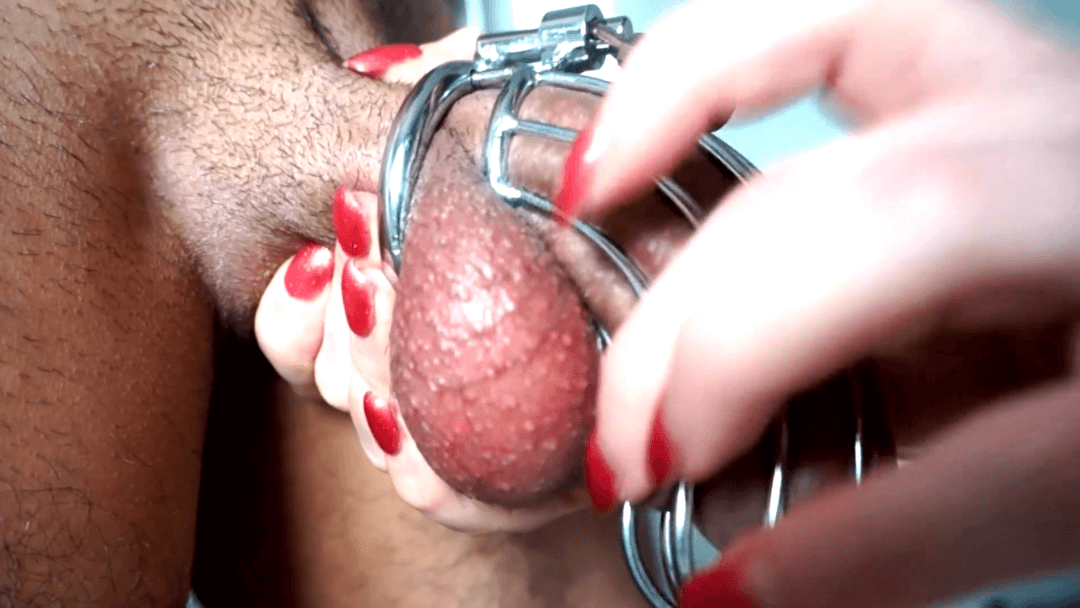
Chastity Cages: From Ancient Control to Modern Femdom
Hey everyone, Levi here! If you’re curious about the world of male chastity, especially the modern-day phenomenon of chastity cages, you’re in the right place. As someone who enjoys being locked up, I thought I’d share a bit about how these devices have evolved and become a staple in the femdom community today. Let’s dive into the fascinating history and cultural significance of male chastity.

Ancient Civilizations
In ancient Greece and Rome, they didn’t have our high-tech chastity cages, but the idea of sexual control was still a big deal. Men were expected to be faithful, especially in marriage. And while these societies were pretty male-dominated, women did wield significant influence over their husbands’ sexual conduct.
Medieval Europe
Chastity belts are often depicted as medieval tools for ensuring fidelity, but historical evidence for their widespread use, particularly for men, is limited. The concept became more prominent during the Renaissance, especially with tales of knights securing their wives’ chastity before heading off to the Crusades. The tradition of courtly love also emerged during this period, where men showed devotion through acts of service and restraint, laying the psychological groundwork for consensual power exchange.
Courtly Love and Its Influence
Courtly love was a medieval European tradition that emphasized noble and chivalric love, often placing women in a position of moral superiority. Men demonstrated their devotion through acts of service and restraint, which can be seen as an early form of consensual power exchange. This dynamic mirrored the feudal system, with the lady elevated almost to a divine status, and the male lover serving her with patience and humility.
Key Characteristics
- Idealization of the Lady: Women were revered and often unattainable, which added to the emotional intensity of the relationship.
- Chivalric Service: Men proved their love through noble deeds and self-restraint.
- Secret and Adulterous Nature: Courtly love was usually secretive and often involved longing for a married lady, adding a spiritual dimension to the love.
Renaissance Period
During the Renaissance, an era of great artistic and literary expression, themes of sexual restraint and fidelity were often explored through symbolic depictions of male chastity. Through intricate works of art and richly crafted literature, notions of purity and commitment were examined in a variety of ways, shedding light on societal views and expectations surrounding sexuality during this period. These representations carried heavy symbolism, invoking both physical and emotional elements to convey the complexities of male chastity within relationships and society as a whole.
Victorian Era
The Victorian era was a time of strict moral codes and intense sexual repression. In an effort to control desires and prevent what was believed to be detrimental behavior, rudimentary chastity devices were developed. These devices were mainly designed to inhibit masturbation, which was thought to have grave consequences for one’s health. The societal pressure to maintain purity and avoid any form of sexual expression created a constant tension and fear among the people of that time.
Early 20th Century
As the societal norms and expectations surrounding gender roles began to shift in the early 20th century, a corresponding change was seen in the dynamics of sexual power. The walls of repression were slowly crumbling, ushering in a new era of sexual liberation. With this came a growing awareness and interest in diverse sexual practices, including chastity and dominance, that had long been considered taboo. The exploration of these forbidden desires added a new layer of complexity to human sexuality, shattering traditional ideas and paving the way for a more open-minded society.
Post-World War II to Modern Era
Fetish Communities and Media: The mid-20th century saw the rise of fetish communities, where male chastity and female domination were explored and documented. Publications like “Penthouse” and “Modern Man” brought these concepts into more mainstream awareness.
Commercial Chastity Devices: The 1980s and 1990s marked the development of modern male chastity devices made from metal or high-grade plastic, designed for comfort and long-term wear. The internet revolutionized information sharing, leading to a broader acceptance of male chastity and female-led relationships.
Feminist Influence: The rise of feminism and discussions around consensual power dynamics have significantly influenced the perception of female domination. Male chastity is now seen as a consensual and empowering practice for both parties involved.
Cultural Significance and Modern Practice
Psychological and Emotional Aspects: Male chastity often involves a consensual power exchange, enhancing intimacy and trust within the relationship. The erotic thrill of denial and submission plays a significant role, with the controlled partner deriving pleasure from the act of submission and anticipation of eventual release.
Mainstream Acceptance: Modern media, including TV shows, movies, and books, have depicted male chastity and female domination, contributing to greater public awareness and acceptance. Sexual wellness and education programs also discuss consensual kink practices, emphasizing safety, consent, and mutual pleasure.
Conclusion
From ancient practices to modern consensual power exchanges, the history of male chastity is a testament to the evolving nature of human sexuality. Today, chastity cages are recognized as a fulfilling aspect of many relationships, celebrated for enhancing intimacy, trust, and mutual respect. So whether you’re just curious or thinking about trying it out, male chastity is more than a kink—it’s a journey into deeper connection and control.


















































Latest Comments